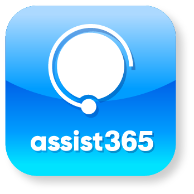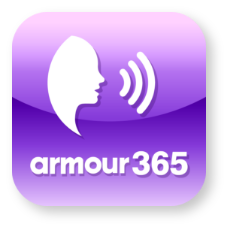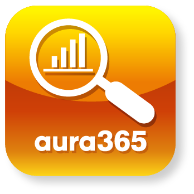Understanding AI Chatbots
AI chatbots are computer programs that can simulate a conversation with humans through text or speech. The bot has to have a certain level of artificial intelligence to respond in a human-like manner. They are commonly used in business to provide customer service, assist with tasks, and gather data.
In the business world, AI chatbots can help companies streamline customer service by providing immediate assistance to users, regardless of the time of day. AI chatbots can benefit businesses, including improving customer service, gathering data, and streamlining tasks. By automating specific processes, chatbots can help companies save time and resources while providing personalized assistance to users. These chatbots use artificial intelligence techniques, such as supervised and unsupervised learning, to understand and respond to user inquiries and requests naturally and efficiently. As a result, businesses can use AI chatbots to enhance the customer experience and improve their operations.
Why Chatbots are a Big Opportunity
Chatbots are a significant opportunity for businesses because they allow businesses to provide a better customer experience. By automating mundane queries Chatbots save time and free up human agents so that they can focus on more crucial tasks. You can also use chatbots to improve sales by presenting customers personalized offers based on their shopping history or preferences.
Chatbots are everywhere, and they’re not just for customer service anymore. They can help you manage your schedule, send reminders about meetings, answer questions about your company’s products and services, and even help you with your marketing strategy.
How Do AI Chatbots Work?
AI Chatbots are software programs that use natural language processing to communicate with humans over a messaging platform. Chatbots work by scanning incoming messages for keywords or other triggers that indicate the user wants to do something specific.
Once the bot has identified a command from the user, it can run any number of actions based on the command. For example, if the user sends a message containing “send me an email,” the chatbot could send them an email with information about their account or a promotional offer. The way that chatbots respond to commands is called “dialog management.” Dialog management refers to how chatbots direct conversations with users—it allows them to understand what you mean when you ask them questions or give them instructions.
To develop an AI chatbot, developers must first gather a large dataset of text or language data from which the chatbot can use to learn. This dataset is then used to train a machine learning model, an algorithm that can identify patterns and trends in the data. The trained model is then integrated into the chatbot, allowing it to process and understand user inputs. To understand user inputs, the chatbot uses NLP techniques to analyze the text or language data and identify the relevant meaning and context. Based on this analysis, the chatbot can respond appropriately to the user’s inquiry or request.
Using machine learning algorithms and NLP techniques, chatbots can understand and respond to user inputs naturally and efficiently, helping businesses save time and resources while enhancing the customer experience.
Types of AI Chatbots
AI chatbots are becoming more and more prevalent in our daily lives. The goal of a chatbot is to simulate conversation with users, making them seem more human and therefore more relatable. A chatbot’s communication ability will depend on its function: some chatbots function based on rules, while others use machine learning.
Rule-Based Chatbots
These bots have programmed rules that guide their responses to user input. The user’s input is parsed and matched against these rules, and a response is generated based on which rule has been matched.
To use a rule-based chatbot, a user typically initiates a conversation with the chatbot by entering a message or question. The chatbot then analyzes the text or language data using predefined rules to understand the meaning and context of the user’s input. Based on this analysis, the chatbot can generate a relevant response from a predetermined set of answers.
For example, if you ask one of these bots for a recipe for chocolate chip cookies, it would reply with the recipe for chocolate chip cookies. If you were to ask about the weather, it would tell you what the weather was like outside at that moment.
AI Chatbots
Unlike rule-based chatbots, which match user input against predefined rules and generate responses accordingly, AI chatbots learn from previous user interactions and improve over time by analyzing those interactions and identifying them.
These chatbots use algorithms to learn from user interactions and improve their performance over time. To do this, they must be trained on a set of data labeled with correct answers for each question asked. Once trained, these bots can respond to new questions with high accuracy rates because they have already been exposed to similar questions during training periods where humans provided correct responses.
Unsupervised Learning Chatbot
An unsupervised learning chatbot is a type of artificial intelligence that uses machine learning techniques to understand and respond to user inputs without being explicitly programmed or given labeled training data. The chatbot is expected to identify patterns and trends in the data, allowing it to learn and adapt to user interactions over time. This chatbot can be helpful in various applications, such as customer service, information retrieval, and recommendation systems. It can provide personalized responses while also being flexible and efficient.
Unsupervised chatbots can be used in various applications, including customer service, information retrieval, and recommendation systems. They can learn from user interactions to improve their accuracy and relevance over time and can adapt to changing user needs and preferences.
Chatbot- Building Platforms
Chatbot-building platforms are the easiest way to get started. They provide a pre-built chatbot user interface and allow you to add custom functionality using code blocks.
Chatbot-building platforms allow users to create chatbots without needing advanced programming skills. Many platforms offer a range of pre-built templates and features that can be customized to meet the user’s specific needs.
In addition to providing a range of customization options, chatbot-building platforms often include features to help chatbots understand and respond to user inputs more naturally by using NLP and machine learning algorithms that can learn from user interactions to improve their accuracy and relevance over time.
Development Platforms
Development platforms allow you to create your chatbot in code to customize it as you see fit. These tools include natural language processing (NLP) engines, which help the bot parse and understand human language.
Publishing Platforms
Once you have a working prototype for your chatbot, it’s time to publish it so customers can start interacting with it. Publishing platforms are used to deploy your finished bot to various applications, including websites, mobile apps, SMS services, and more.
Frequently Asked Questions
How is AI used in chatbots?
AI is used in chatbots to understand and respond to user inputs in text or spoken language. Chatbots use natural language processing (NLP) techniques to analyze the language data and identify the relevant meaning and context.
For example, if a user asks a chatbot a question in natural language, the chatbot will use NLP techniques to understand the meaning of the words and the context in which they are used. Based on this understanding, the chatbot can then generate a relevant response.
Which algorithm is best for a chatbot?
Conventional chatbots use a variety of algorithms, including naïve bayes, decision trees and support vector machines, and natural language processing (NLP).
What type of AI are chatbots?
Chatbots are a type of Artificial Intelligence that uses machine learning and natural language processing (NLP) to improve over time.
Is chatbot supervised learning or unsupervised learning?
Most chatbot solutions use supervised machine learning—where you have input variables (x), an output variable (y), and an algorithm is used to learn the mapping function from one to another.
What is the technology behind chatbot?
Chatbots rely on algorithms that derive from artificial intelligence and natural language processing (NLP). The chatbot becomes smarter over time with continuous user interaction—exhibiting human-like responses to freeform inputs.





